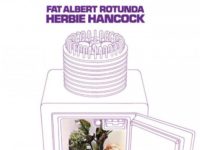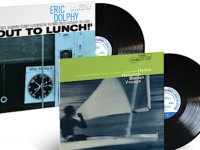Herbie Hancock has enjoyed a decades-long musical career that has been both artistically and commercially fulfilling. Not many other artists can boast that of any genre, much less a jazz musician. But 2008’s winner of the Album of the Year Grammy has given us Blue Note modern jazz classics like Maiden Voyage, abstract space funk-jazz like Sextant, an early hip-hop hit in Future Shock (which contained “Rockit,” another surprise Grammy winner), and nearly all shades of jazz in-between.
It’s also often very hard to tell, but there’s something about his composing style that cuts across the idioms he assigns his compositions to. He can often bring together his profundity in the areas of classical, modern jazz and R&B into songs that transcends all of those music forms.
His 1974 tune “Butterfly” is a case in point. Like the best Hancock ballads, this one has inner complexity, outer beauty, and a little mysteriousness that pervades through both layers. And like the best Hancock electric songs, he has a way if getting a warm, human tone out of the Fender Rhodes that few can match.
As it was originally conceived, the head leads into an extended soling section that takes up most of the song, before returning to the head again. But what a pretty little head that is. So much so, that it’s been covered numerous times sans the long middle without losing any of the beauty of the tune (Azymuth’s rendition from 2008 is just one memorable example.) He juices the main riff to the fullest extent, creating variations on it and repeating it in different measures, while bass clarinet and sax of Bennie Maupin gently sings the main melodic line. Hancock was starting to play a lot of synthesizers at the time, but even today his judicious use of the clavinet, ARP String and other synths don’t sound all that aged or cheesy.
The rest of the band make this song work, too. Bill Summers’ percussion work really stands out and adds a little tropical flavor. Paul Jackson finds a big space around the middle register and fills it in with popping bass lines. Maupin solos with a soprano sax with much soul and allows the song to come to him, never forcing his lines. Mike Clark, the real hero on the entire 1974 Thrust album that this song debuted on, works in perfect tandem with Summers and Jackson, and his hit-hat/snare drum pulse drives the whole song with a slow, funky drive.
Hancock himself must have pleased with this tune because he’s revisited it on several occasions. The following year, in 1975, it appeared on his Japan-only live album Flood (a helluva live album for the ages), and he and his Head Hunters band play it even better on that occasion. About 20 years later, Hancock re-imagined it for his hip-hop/funk-jazz delight Dis Is Da Drum (1994).
Given an unmistakably 1990s treatment, Summers returns to provide some rich percussion and Hubert Laws’ flute replaces Maupins’ various woodwinds, and the middle bridge is rewritten and shortened. Running at barely more than half the time of the ’70s version, it doesn’t ask as much patience from the listener and its slicker and more vivid tones make it more of an ear candy song than before, but the lack of stretching out heard on this one doesn’t make necessarily make it inferior; it’s just more appropriate for a different mood, that’s all.
No matter how Herbie Hancock serves up the song, it’s always been appealing. It all starts with the mighty composing pen of one of jazz’s most rightly enduring figures.
- James Brandon Lewis Quartet – ‘Abstraction Is Deliverance’ (2025) - May 27, 2025
- Soft Machine – ‘Drop’ (1971, 2025 remaster) - May 21, 2025
- Marshall Allen’s Ghost Horizons – ‘Live In Philadelphia’ (2025) - May 19, 2025




